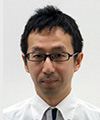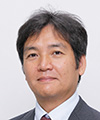 |
|||||||||
|
|
|||||||||
|
Feature Articles: Technology Development for Achieving the Digital Twin Computing Initiative Vol. 20, No. 3, pp. 10–15, Mar. 2022. https://doi.org/10.53829/ntr202203fa1 The World Made Possible by IOWN Digital Twin ComputingAbstractDigital Twin Computing (DTC) to achieve future forecasting and optimization by linking the real and digital worlds is now being researched and developed as one of the main pillars of the Innovative Optical and Wireless Network (IOWN) vision targeted by NTT. This article introduces the world under DTC and four grand challenges in making DTC a reality. Keywords: IOWN, Digital Twin Computing, grand challenges 1. IOWN Digital Twin ComputingThe Digital Twin Computing (DTC) initiative will be achieved on an innovative network and information processing platform having ultra-large capacity, ultra-low-latency, and ultra-low-power features on NTT’s Innovative Optical and Wireless Network (IOWN). This initiative aims to achieve large-scale and high-accuracy future forecasting and advanced means of communication with new value beyond the limits of conventional information and communications technology (ICT) (Fig. 1).
2. The world targeted by the DTC initiativeThe three key features of DTC are as follows. (1) Provide a common means for analyzing large-scale and complex interactions among digital twins to enable a wide variety of digital twins to be freely recombined for analysis, testing, and forecasting. (2) Enable the construction of a virtual world and extension of real-world functions and interactions by making full use of digital properties to combine derived digital twins achieved through replication and processing. (3) Enable interactions of social aspects such as human behavior and communication by reproducing and representing the inner state of humans including the thoughts and decisions of individuals in digital space. An explosive increase in the volume of distributed data is expected. In the next industrial revolution called “Society 5.0,” there will be an increase in cooperation between humans and machines in the real world, but there should also be a real-time exchange of information between humans and machines in cyberspace through the use of digital twins. The purpose of digital twins introduced in many industries is to copy and simulate things and spaces existing in the real world. However, the DTC initiative to be achieved in IOWN is a new computing paradigm that will enable reproduction of the real world on a scale and with high accuracy heretofore unseen by freely recombining and performing diverse operations on all types of digital twins. It will also achieve mutual interactions in digital space that include the inner state of humans beyond the mere physical reproduction of the real world. The aim is to achieve an environment that can analyze and test a wide variety of social issues. By selecting a better future on the basis of the results of such testing and implementing a feedback cycle to the present, DTC aims to support the ever-changing real world while creating worlds that present an abundance of options tailored to individual desires. 3. Activities closely related to the DTC initiativeThe DTC initiative will contribute to the provision of new value. This will include the 4D digital platform™, which will execute future forecasting and optimization through detailed integrating space and time to solve social problems, as well as the creation of new value and improvement in well-being, which will lead to an enriching future for living a happy life through the introduction of smart technologies in the medical field. The 4D digital platform™ matches and integrates with high-accuracy four-dimensional information consisting of latitude, longitude, altitude, and time enabling data fusion and future forecasting in conjunction with diverse industrial platforms. To achieve a practical platform, NTT is promoting a variety of activities together with various partners in diverse industrial fields. Our goal is to contribute to a behavioral transformation toward a better future by analyzing diverse social activities in the present and forecasting the future, by applying technology that can make position-and-time data obtained from sensors highly accurate, and integrating these data in real time on the Advanced Geospatial Information Database with highly precise and abundant semantic information. Through such future forecasting, we aim to provide new value such as, for example, increasing the smoothness of road traffic flow; maximizing the use of urban assets, such as energy, distribution, and emergency vehicles; enabling cooperative maintenance of social infrastructures; and promoting the understanding of the Earth toward a sustainable environment and disaster prevention. A bio digital twin (BDT) is one way of contributing to well-being. A BDT is achieved through technologies for estimating unknown functions in the living body through mathematical modeling based on various types of information related to the living body and on the mechanism behind the information network within the body. A BDT constructed with these technologies can be used to derive multiple options in prevention, treatment, and care and conduct detailed simulations of the effects of those options. The aim is to contribute to a future of ongoing medical care that will enable people to face their future health with less worry (Fig. 2).
4. Future challenges for making DTC a realityThe above DTC initiative draws up a society that should be aimed for. To achieve such a society, it will be necessary to take a giant leap beyond current technical standards in a variety of technical fields. While adopting an approach that steadily advances technology through research and development (R&D) on the basis of the addition of new ideas through forecasting, there will be a need to take on challenges that drive major technical innovations without being bound by conventional approaches. With this in mind, we decided to pursue R&D through a vision-driven approach. In this approach, we first offered up a bold future vision even if it should appear to be difficult to achieve at first glance. Then, by carrying out backcasting from the future vision, we established targets and identified problems to be solved in the most direct way and aimed for our targets by solving the problems (Fig. 3).
We had many discussions on setting targets in R&D to actualize our vision for a future society that many people would think attractive to live in. We believe that in a future society having a high diversity of people, expanded opportunities and possibilities, an increasingly complex social structure, and increasing uncertainty on a global scale, harmonious relationships among the Earth, society, and individuals should be fostered while enhancing a person’s reason for living and emotional richness. Finally, we narrowed down the directions of this wide-ranging DTC initiative and arrived at the following four major R&D targets to be achieved as grand challenges. (1) Mind-to-Mind Communications: A new form of communication that transcends not only differences in language and culture but also differences in individual characteristics such as personal experiences and sensitivities to enable direct understanding of how other people perceive and feel the world around them. (2) Another Me: Not your spouse, your child, or your best friend but rather a digital alter ego as a new and irreplaceable partner that can expand your opportunities in life many times over and live and grow with you. (3) Exploring Engine for the Future Society: An engine for exploring the form of future societies so that individuals can select the actions and behavior that they desire toward such a society. (4) Inducing Inclusive Equilibrium Solutions for the Earth and its Social and Economic Systems: Solutions that present an inclusive equilibrium that achieves harmony between the autonomy of the global environment and that of the social and economic systems of the global environment while presenting multiple options for transforming the social system toward that equilibrium. The Feature Articles in this issue introduce the world targeted by each of these grand challenges as well as current R&D activities and technologies now under study [1–4]. 5. Partnering strategyEach of these grand challenges presents a great vision, and to make these visions a reality, it will be necessary to combine the abilities of many stakeholders having a wide range of knowledge, technologies, and resources. In short, these four grand challenges are not technology-driven targets that can be achieved by the development of a single epoch-making technology. Rather, they can be viewed as solutions to fundamental social problems that require the transformation of social and human consciousness. For this reason, the strategy to be adopted in collaborating with needed partners will have to be different than any conventional strategy. Partners had been chosen with a focus on similarity and complementarity from the viewpoint of technological elements, and many cases took on the form of joint development with respect to a specific technology. However, achieving the targets of the DTC grand challenges will require searching for partners that can collaborate and combine abilities in finding solutions all from the viewpoint of achieving a stated vision. This will require tie-ups with partners in different fields that can share a common vision such as partners having completely different technologies than us, having expertise for solving social problems as opposed to technical problems, and having the abilities and resources for transforming society such as government and non-governmental organization. It will also require the combining of strengths possessed by NTT and each partner. We can give the fourth grand challenge, “Inducing Inclusive Equilibrium Solutions for the Earth and its Social and Economic Systems,” as a specific example of this strategy. In this challenge, we proposed a grand vision of presenting an inclusive equilibrium that achieves harmony between the autonomy of the global environment and that of the social and economic systems of the global environment while presenting multiple options for transforming the social system toward that equilibrium. We are now pursuing R&D toward the embodiment of that vision together with specialists in climate models and those in circulation models including financial models that support this vision, with us at NTT laboratories working together as a system to interconnect all the people involved. As part of this process, we are searching out new forms of collaboration with partners that are not limited to the development of individual technologies but that combine in some way the technologies and knowledge needed to achieve an overall vision. Standardization activities can also be viewed as a partnering strategy. In the past, members having strengths in the same technical area within an industry would come together to formulate common specifications. In DTC, however, the scope of application is expansive with a number of industries included, and there are elements of DTC in which acceptance by society is an important factor such as human digital twins. As a result, DTC standardization activities are not just a matter of holding discussions on technical issues. It is also necessary to promote discussions with diverse stakeholders with a view to implementing DTC in society. 6. ConclusionThe DTC initiative holds the possibility of greatly changing the way that society should be 10 and 20 years from now. To this end, there will be a need for R&D that takes an approach different from the conventional one by proposing future visions as typified by grand challenges. To achieve IOWN that includes the DTC initiative, it will be essential to bring together a variety of research and technology fields such as the social sciences, humanities, natural sciences, applied sciences, as well as interdisciplinary fields. At NTT laboratories, we will continue in our efforts to implement the IOWN vision while collaborating with experts and global partners from this wide array of research and technology fields. References
|
|||||||||









